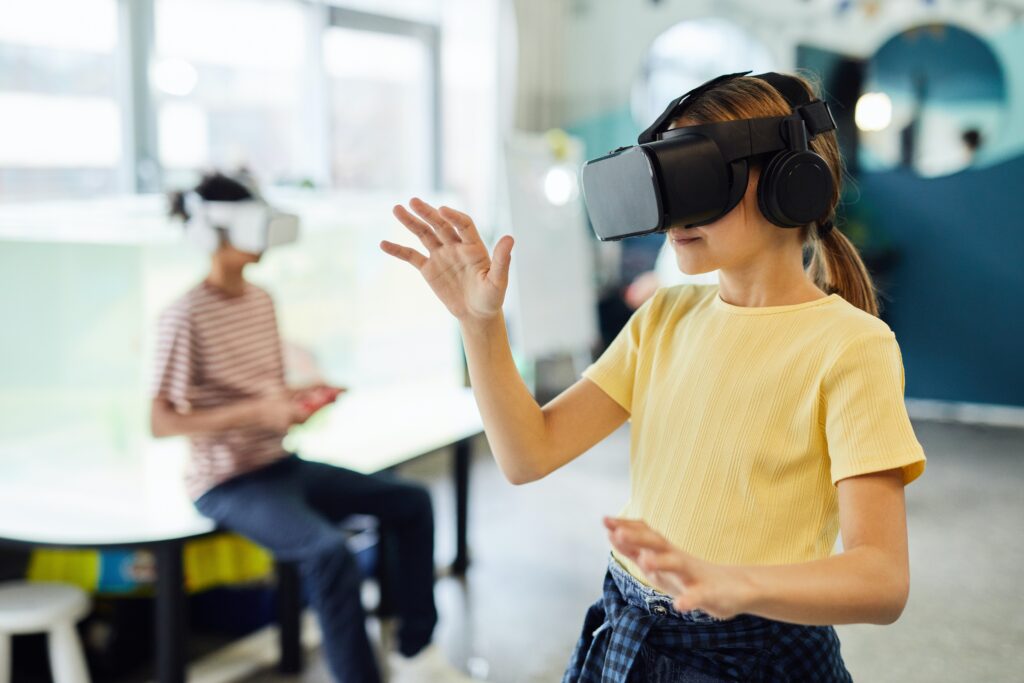In today’s interconnected world, the Internet of Things (IoT) has expanded its influence to include wearable technology. Wearable IoT devices have emerged as a groundbreaking innovation, seamlessly integrating connectivity and smart features into our daily lives. From fitness trackers and smartwatches to smart clothing and accessories, these devices offer a wide range of innovative applications. In this blog article, we will explore the latest innovations in wearable IoT devices and delve into their diverse range of applications, revolutionizing industries and transforming the way we live and interact with technology.
The Evolution of Wearable IoT Devices

Wearable IoT devices have come a long way since their inception. The early stages of wearable technology introduced basic fitness trackers and smartwatches that primarily focused on tracking steps and displaying notifications. However, as technology advanced, so did the capabilities of these devices. Today’s wearable IoT devices boast a sophisticated array of features, including advanced sensors, connectivity options, and powerful data analysis capabilities. The integration of these technologies has resulted in wearable devices that are more versatile, accurate, and capable of seamlessly integrating with our daily lives.
Applications in Health and Fitness
The impact of wearable IoT devices on the health and fitness industry cannot be overstated. These devices have revolutionized the way individuals monitor and manage their well-being. Fitness trackers, for example, provide real-time data on activities, heart rate, sleep patterns, and calories burned. They empower users to make informed decisions about their exercise routines, track progress, and set achievable goals. Additionally, wearable IoT devices have played a significant role in promoting a healthier lifestyle and facilitating preventive healthcare. The integration of features such as stress monitoring, hydration tracking, and guided workouts offers personalized insights and encourages users to adopt healthier habits.
Enhancing Safety and Security
Wearable IoT devices have also made substantial contributions to personal safety and security. By incorporating features such as GPS tracking and emergency alert systems, these devices provide an added layer of protection. For instance, in emergency situations, wearables equipped with GPS technology can accurately relay the user’s location to emergency services, enabling swift assistance. Moreover, industries such as construction, mining, and healthcare have adopted wearable IoT devices to enhance worker safety. These devices can monitor vital signs, detect hazardous conditions, and provide real-time alerts, minimizing risks and improving overall safety protocols.
Smart Fashion and Personalization

The convergence of fashion and technology is becoming increasingly prevalent through wearable IoT devices. Smart clothing and accessories have emerged as fashion-forward options that seamlessly integrate technology into our everyday attire. From smart jewelry that tracks biometric data to intelligent garments that adjust the temperature based on environmental conditions, these wearable IoT devices combine style and functionality. Moreover, wearables offer personalized experiences, adapting to individual preferences and needs. With customizable interfaces, adaptive algorithms, and the ability to sync with other smart devices, wearable IoT devices provide a unique and personalized fashion statement.
Conclusion
Wearable IoT devices have revolutionized the way we interact with technology, offering a wide range of applications across various industries. From health and fitness tracking to enhancing safety and security, these devices have become integral to our daily lives. Moreover, the seamless integration of technology into fashion has opened up a new realm of possibilities, combining style, functionality, and personalization. As technology continues to evolve, wearable IoT devices will undoubtedly play a significant role in shaping our future, fostering innovation, and improving the overall quality of life.
FAQs
Q: What are wearable IoT devices?
A: Wearable IoT devices are small electronic devices that can be worn on the body and are equipped with sensors and connectivity capabilities to collect and transmit data. These devices enable various applications and functionalities to enhance user experiences and monitor personal health and fitness.
Q: What are some popular applications of wearable IoT devices?
A: Wearable IoT devices have a wide range of applications, including fitness tracking, healthcare monitoring, smartwatches, virtual reality headsets, smart clothing, and gesture-based control systems. These devices offer convenience, personalization, and insights into personal well-being.
Q: How do wearable IoT devices enhance healthcare and fitness?
A: Wearable IoT devices enable real-time monitoring of vital signs, physical activity, sleep patterns, and other health-related data. They provide individuals with valuable information to track their fitness goals, manage chronic conditions, and enable healthcare professionals to remotely monitor patients and provide personalized care.
Q: What are the innovations in wearable IoT devices?
A: Innovations in wearable IoT devices include advanced sensors for accurate data collection, miniaturization of components for comfortable wearability, longer battery life, integration with artificial intelligence for personalized insights, and the incorporation of augmented reality and virtual reality technologies.
Q: What are the privacy and security concerns associated with wearable IoT devices? A: Privacy and security concerns include the collection and storage of personal data, potential data breaches, unauthorized access to sensitive information, and the sharing of data with third parties. Manufacturers and users need to ensure data protection, implement encryption, and follow best practices to addre

